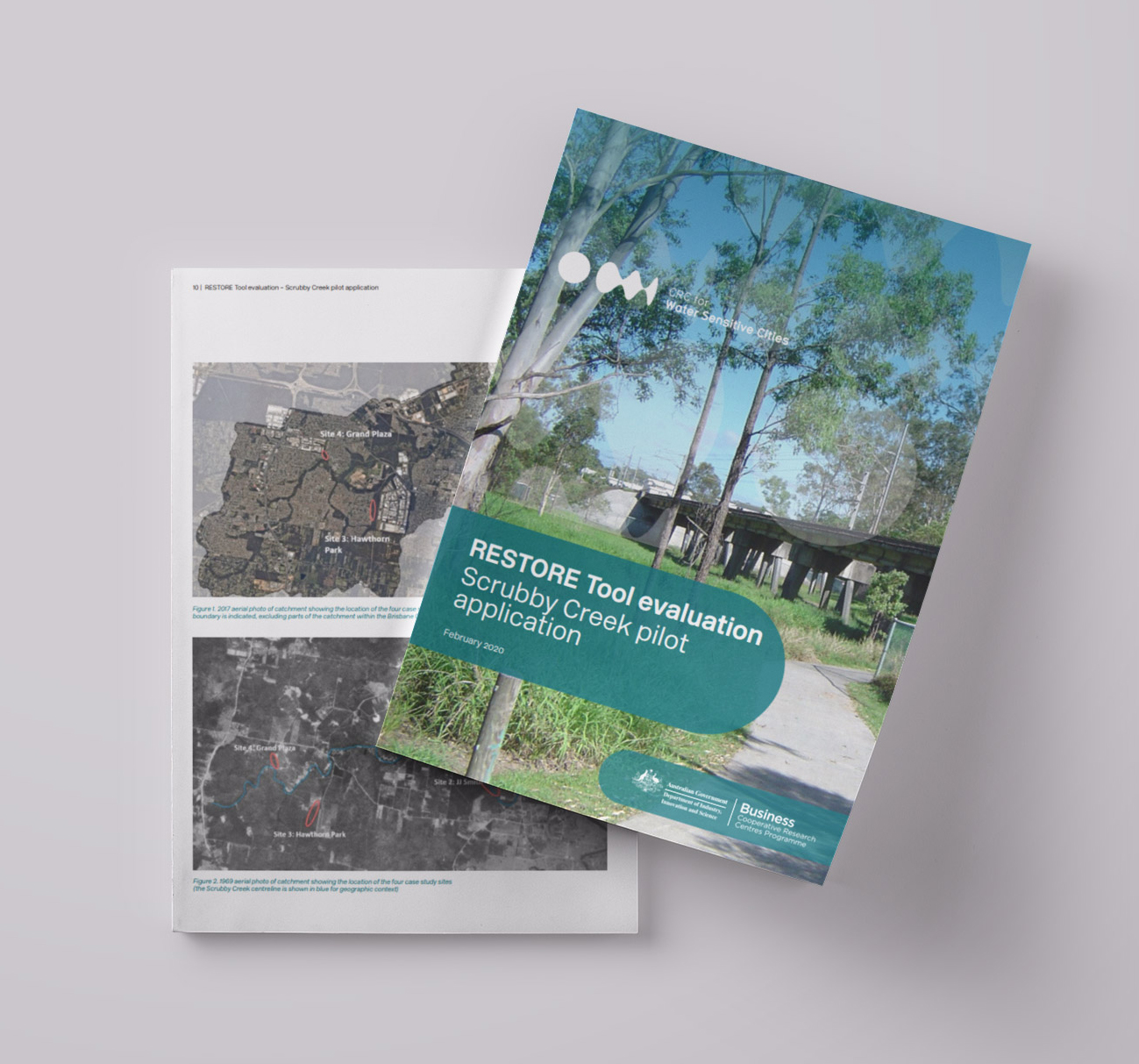E2DesignLab tests RESTORE: final report
We commissioned our partner E2DesignLab to conduct an independent review of our newly developed RESTORE Tool. E2DesignLab applied the tool to four sites along Scrubby Creek in the City of Logan, south-east Queensland. Now, we’ve released the findings from that pilot application.
But, let’s start at the beginning. What is the RESTORE Tool?
Our RESTORE Tool is a decision making tool to support the holistic repair of urban waterways. The tool asks practitioners questions about the environmental and urban setting of their restoration site and identifies the ecosystem components likely to be most relevant. A compendium of 13 factsheets: Improving the ecological function of urban waterways supports the tool.
What did E2DesignLab test?
E2DesignLab’s objective was to test the tool in a real world situation. They applied it to four waterway sites in the Scrubby Creek Catchment in Logan City in Queensland (identified through Logan City Council’s Scrubby Creek Recovery Plan). The sites differed in their characteristics, location within the catchment and their potential for restoration.
E2DesignLab approached the pilot application like this:
- Sole application of the tool—One team member applied the tool using available desktop information and knowledge gained through the Scrubby Creek Recovery Plan project to answer the questions to the best of their ability.
- Team based application of the tool—They held a team workshop, involving four additional team members, to work through the questionnaire and improve the rigour of the results.
- Analysis—The team reviewed the results of the RESTORE Tool to confirm priority ecological components for each of the sites.
- Identification of actions—They used the complementary compendium of factsheets to identify potential actions at each site.
- Comparison—They compared the priorities and actions identified using the RESTORE Tool and accompanying factsheets to those developed during the Scrubby Creek Recovery Plan project, to test the tool’s validity.
What did they find?
The E2DesignLab team found the RESTORE Tool has benefits and limitations.
They report the tool introduces scientific evidence to challenge perceptions and biases:
‘A wealth of scientific evidence supports the questions and development of the tool, and forces professionals to evaluate their own assumptions, challenging perceptions and biases. It includes questions that may otherwise be overlooked. This scientific base also makes the tool a highly valuable educational tool and literature source.’
Summarising its limitations, the test team says:
‘Some elements of the RESTORE Tool may be refined in future iterations, to consider the relative importance of certain factors at a site. Some guidance around providing weightings may be useful so practitioners can accurately assign importance to various factors. This version of the tool is useful in its current setting, and could be improved with more investment in the key site issues and the feasibility of implementing certain actions’.
We’re grateful to the E2DesignLab team for their objective application and assessment of the RESTORE Tool. If you’d like more detail about the four study sites or how the test team applied the tool, download a copy of the report.
